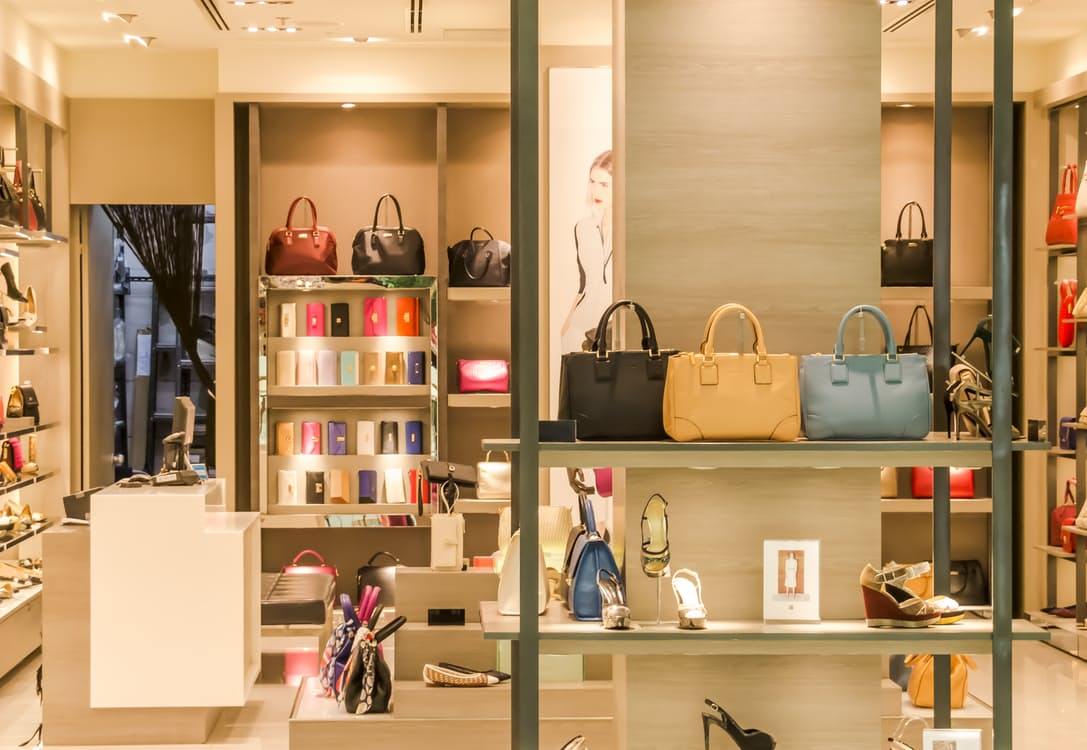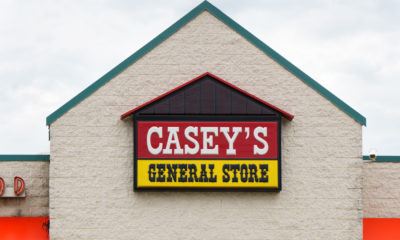Business
Making luxury products and services more available to the masses
Mass luxury can be a lucrative avenue for additional high volume business for luxury brands but it must be approached with a detailed vision and plan.

Mass luxury refers to the availability of luxury products and services to a vast demographic of buyers. Mass luxury consumers are more complex and add emotional and practical elements when making a buying decision.
The luxury market is lucrative for many reasons. Increased brand prestige and desirability means more opportunity for higher margins and your accountant will agree that leads to a bigger bottom line. Luxury brands are hypersensitive to changing economic conditions and markets that were once golden gooses (read Chinese goose) are now questionable in best case scenarios. Luxury brands are in a unique position to capture more market share even during dicey economic conditions.
The catalyst for this article came from a recent conversation I had with a financial analyst who asked me about ‘mass luxury’. I was a little light on the term myself so as any good journalist would, I Googled it and discovered a whole other side of the luxury business.
No, mass luxury does not refer to Etihad’s new Airbus A380 super jumbo jet. The simple definition of mass luxury is the availability of luxury brands and services to a larger demographic of buyers.
For a more detailed and mechanical description The German luxury car way to define it is when a luxury brand, either established or not, offers a perceived premium or elite product or service at a value price point, sacrificing profit margin on each individual transaction in the hopes of recouping and profiting from increased demand and volume.
Some players play exclusively in the mass luxury demographic while new luxury brands look at the mass luxury category as a way to get ‘their feet wet’ and build that critical reputation and brand equity from the ground up.
Super luxury brands also dip their toe into the mass luxury pond with ‘special editions’ and value oriented services that offer the brand’s reputed experience but at a lower cost of entry.
From a business perspective, the case for more volume is pretty obvious. More sales will always equal a better bottom line and your accountant will appreciate that. But luxury brands do have some things to consider and established brands face even bigger challenges when expanding their offerings across more markets.
Brand equity is still equity
Anyone who works in the luxury business will always default to the ‘brand equity’ argument. And fortunately for them, it’s a good and valid argument. Demand and desire for luxury brands is driven by exclusivity and limited availability. Birkin bags don’t fetch 7 figures on the open market because they are available on a peg board at Target.
Established brands do have a duty to protect and maintain their brand equity and diluting itself in the lower market may ebb away at that precious equity. A balance between maintaining exclusivity and desire while gaining market share on the lower end could exist as suggested by travel bloggers Ana:
Luxury by definition, for me, means something exclusive, ie not for everyone. And as Someone said, luxury is invisible but it must be felt. That said, I have nothing against a proposition where an excellent quality experience is provided to a larger group of people at one time. As long as it is consistent and has the client’s needs and wants at heart, then fair play.
Brand strategists will have their work cut out for them in maintaining brand equity, desirability and reputation in check while trying to capture market share and volume at the lower end of the market.
Why look down market?
When you look at why a business is in business, really it’s to be in business. Louis Vuitton didn’t start making luxury horse saddles so they could be donated to charity. And being in the luxury business has its ups and its downs but there are major shifts happening in the background and an evolution of the category is long overdue.
Marketing luxury brands in China was once referred to as ‘shooting fish in a barrel’ and yes, with over 1.35 billion fish in that barrel, China was once the darling of the luxury market. The golden goose that once was has been tarnished with government-driven austerity measures, regional economic instability and a general blah attitude towards shiny things that depreciate.
Luxury brands can no longer rely on The Mainland to drive the bottom line. The populus may not be able to vote with a ballot but are loud and clear with their dollars and prefer spending them on luxury travel and experiences.
Speaking of upheaval, that whole preference to spending money on experiences versus stuff applies to the rest of the world as well. The luxury travel industry continues to boom with more millennials coming to market and are willing to part quickly with their hard-earned cash for the latest thrill.
Luxury travel and service providers have a distinct opportunity to cater to a lesser affluent crowd but who are equally enthusiastic about luxury travel and experiences.
During my discussion with my favorite Singapore-based financial analyst, we came to the conclusion that new luxury brands that cannot count on reputation or brand equity can benefit from the down market by offering their products and services to a wider audience to quickly build brand presence and a following.
Nylla offers her thoughts on the ‘mass market’: Beyond being an oxymoron, one of the advantages of having a mass luxury/affordable luxury market is that it pushes the “traditional” luxury market to establish even higher standards and expand the definitional limits of exclusivity.
Closing the deal for mass luxury
It’s not surprising that luxury marketers have a tougher time dealing with less affluent consumers versus those with excessive amounts of disposable cash. When the realities of cash flow are removed from the buying decision, brands can ultimately rely on desire and reputation to make a sale.
Mass luxury consumers have the added effect of income practicality and reality when making a buying decision on luxury products and services. Branding people understand that it is an uphill battle convincing consumers in this demographic to make the purchase. Brand equity and reputation are huge factors in driving that purchasing decision but price points and the value proposition will close the deal.
Established and heritage luxury brands already have a foot in the door to mass luxury. In terms of deployment and marketing, it is much easier for existing and respected brands to create down market products and services.
Leaders in mediocrity?
The mass luxury category is actually the lifeblood to many recognized luxury brands. Cars and fashion pretty much cover the entire scope of luxury from entry level to super luxury. Michael Kors and BMW can cover any budget with their vast lineups.
Mass producers such as Apple are jumping on the mass luxury bandwagon by declaring themselves a luxury brand by just declaring themselves a luxury brand. Cupertinos’ favorite parking nightmare created and cornered the luxury smartwatch market and offers a wide range of pricing on its device.
The growing luxury travel business offers the most opportunities for covering the mass luxury buying group. Millennials will continue to funnel their disposable income into travel and experiences. Travel and service providers and taken notice of the trend.
Commercial airlines have returned their senses and have put value on the customer experience. Major carriers are upping the the amenities in the air and on the ground across all ticket classes. Luxury villa development continues to boom creating more supply and delivering a luxury vacation experience to a wider range of income groups.
A few points to consider:
-Luxury brands are slow to adapt and react to rapidly changing economic conditions
-Creating downmarket products and offerings can lead to increased sales and volume offsetting lower margins on value positioned lines
-New luxury brands can use the mass market demographic to create presence and a following
-Mass luxury consumers are more complex and have added emotional and practical elements when making a buying decision
-Strategies are critical for established luxury brands to maintain brand equity and desirability while capitalizing on the mass luxury demographic
Mass luxury can be a lucrative avenue for additional high volume business for luxury brands but it must be approached with a detailed vision and plan.
—
DISCLAIMER: This article expresses my own ideas and opinions. Any information I have shared are from sources that I believe to be reliable and accurate. I did not receive any financial compensation in writing this post, nor do I own any shares in any company I’ve mentioned. I encourage any reader to do their own diligent research first before making any investment decisions.

-

 Biotech2 weeks ago
Biotech2 weeks agoPfizer Spain Highlights Innovation and Impact in 2024 Report Amid Key Anniversaries
-

 Business1 day ago
Business1 day agoLegal Process for Dividing Real Estate Inheritance
-

 Markets1 week ago
Markets1 week agoStock Markets Surge Amid Global Uncertainty, But Storm Clouds Loom
-

 Africa6 days ago
Africa6 days agoMorocco Charts a Citizen-Centered Path for Ethical and Inclusive AI

























You must be logged in to post a comment Login